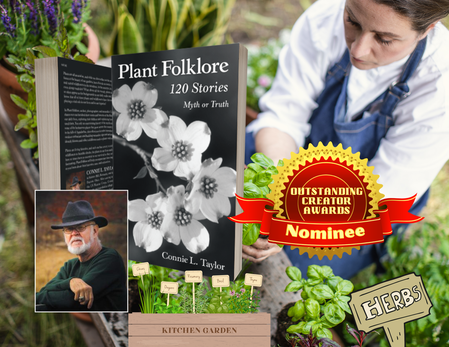|
Score: 88/100 (8.8 out of 10)
Who would've thought that plants could be so fascinating and cool?! Well, we did, but that's beside the point. Most would think this topic would be a little dull or mundane, but author Connie L. Taylor takes it on with zest. Admittedly, we're kinda suckers for this sort of thing. No, we don't think there are magic panaceas growing out of the ground, but some of us have been fascinated with herbal remedies and dietary supplements made from these things. As a consequence of that, we're also on guard for quackery or for someone to try to sell us a “magic pill.” That is 110% not the case with this book. Taylor tells us from the get go that this book is not intended to introduce us to plants that can potential cure, treat, or diagnose diseases and/or conditions, but rather is written for the sake of posterity, for preserving history and culture, and for entertainment purposes. So on one hand... shucks. We've owned a few books that talked about things like that. Unfortunately, at least one of them, Kevin Trudeau, is in prison for touting useless supplements. Then you have guys like Dr. Oz who've always been in that grey area, touting things with some evidence but definitely preying on impressionable and often gullible audiences for views. While this book is nothing like that, and thus is “safe,” it does contain some interesting facts and stories from a historical and culture perspective. Practically all of these facts and stories are interesting and insightful. Some are humorous like with the mullein leaves, which women apparently put in their shoes to keep them from getting pregnant like a medieval contraceptive. There are also captioned pictures to show us what the different plants look like. Something that got us thinking way too hard was how the author tells us how and where to find each plant. So, inevitably we played the game of “Is that a whatchu mahcallit?” or “Is that a Thingy Majig?” every time we saw a random plant growing out of the side of a wall or by a dumpster (because the author describes some of them growing this way). On one hand, this book covers a very broad variety of plants in detail. One another hand, this book just feels like it's missing something(s). For one, you don't get to read about the sexier things like hoodia gordonii and garcinia cambogia, if even to refute their purported effectiveness. You don't get to read about the different types of tea leaves, although you do read about the tea alternatives used during the Revolutionary War times (like spicebush and strawberry bush). You don't get any discussions of bamboo or the unique way in which its used and how it grows, at least that we recall. You do get a section on ginseng, which is interesting. The thing is, we wouldn't call this an “encyclopedia” of plants, it clearly wasn't intended to be. It may be considered a reference for a number of plants, but it's nowhere near exhaustive. Something else that was a bit disappointing was that there are a lot of references to Native American beliefs, traditions, and practices regarding certain plants, however the term “Native American” is used as an umbrella term. We rarely hear about which specific Native Americans or tribes believed or practiced certain things with the plants. There is even a claim that “all” Native Americans and settlers used sweet gum. Did they really? 100% of them? However, shoutout to the author referencing the University of Hawaii's "A Guide to Medicinal Plants of Appalachia!" All in all, you get insights and pictures of 120 plants. What more could you ask for? The author is brilliant and clearly loves and cares about the subject. We recommend this book if you're into this sort of thing! Check it out here!
0 Comments
Leave a Reply. |
Archives
July 2024
Categories |

 RSS Feed
RSS Feed